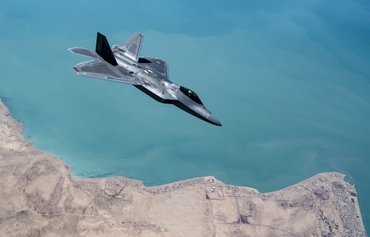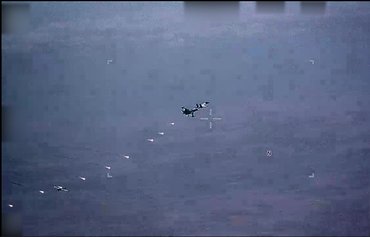A US F-22 Raptor going toe-to-toe in the skies with a Russian Sukhoi Su-35 would result in an American victory in nearly every circumstance, military sources say.
Russia's Su-35, which is touted as a fourth-generation aircraft with fifth-generation technology, was designed with the F-22 in mind.
In 2014, the Russian air force began "deployments of the Su-35 heavyweight air superiority fighter ... which was designed for a dedicated air superiority role to counter the American F-22 Raptor", Military Watch magazine reported in 2020.
"The American F-22 Raptor and the Russian Su-35 Flanker-E are both high-performance multi-role combat aircraft," Forces.net wrote last August.
![An F-22 Raptor fighter jet takes part in the NATO Air Shielding exercise near the air base in Lask, Poland, October 12. [Radoslaw Jozwiak/AFP]](/cnmi_di/images/2023/06/16/42623-raptor-600_384.jpg)
An F-22 Raptor fighter jet takes part in the NATO Air Shielding exercise near the air base in Lask, Poland, October 12. [Radoslaw Jozwiak/AFP]
But the fifth generation F-22's "unique combination of stealth, speed, agility, and situational awareness, combined with lethal long-range air-to-air and air-to-ground weaponry, makes it the best air dominance fighter in the world", says Lockheed Martin, the manufacturer of the F-22.
Unmatched capabilities
The F-22's advanced capabilities mean it would likely come out on top in combat against an Su-35.
Crucially, the Su-35's radar cross-section is much too large.
"The Su-35's radar cross-section (area visible to radar) is between 1 and 3 square meters, or about the size of a large dinner table. The F-22's radar cross-section is about the size of a marble," Business Insider reported in 2016.
To make matters worse, the Su-35 is the only major fourth-generation aircraft without the option of an active electronically scanned array (AESA) radar.
An AESA radar provides longer range and higher ability to detect smaller targets and better resistance to jamming than do older passive electronically scanned array (PESA) radars.
That discrepancy makes the Su-35 vulnerable to being spotted and destroyed before its pilot has even noticed an F-22.
Given the various disadvantages of the Su-35, its heavier potential armament is unlikely to matter in a head-to-head confrontation.
"The Su-35 deploys 12 external hardpoints," Military Watch Magazine reported in 2022, while the F-22 can carry eight missiles, according to the US Air Force.
Yet having 12 missiles makes no difference if the pilot with eight missiles sees you first.
In addition, the human factor is crucial. An experienced pilot will defeat an inexperienced pilot almost every time, and the Russian air force does not train its aviators nearly enough.
US Air Force "fighter pilots reach their first unit with around twice the cockpit experience of their Russian counterparts on average", the military news site Sandboxx reported in March.
That shortage of training dooms many Russian pilots who already labour with inferior technology.
Russian braggadocio
Undaunted by evidence, Russia is still making unfounded claims about its prowess in manufacturing weapons.
Russia's braggadocio about its weapons extends to warplanes like the Su-35 fighter jet, missiles, ships and tanks, even though the past few years have been full of sobering video proof to the contrary.
Since February 2022, when Russia invaded Ukraine, Ukrainian missiles sank the Russian Black Sea Fleet flagship, the Moskva; US-built Patriot missile batteries have shot down multiple supposedly "invulnerable" Kinzhal missiles; and Ukrainian forces have downed various Russian warplanes, including three confirmed Su-35's so far, as reported by Newsweek in May.
Even before the full-scale invasion of Ukraine, Turkish and Israeli drones decimated various forces using Russian weapons in Azerbaijan, Syria and Libya.

![A Russian air force Sukhoi Su-35 fighter lands at the Russian military base of Hmeimim in Latakia province, Syria, September 26, 2019. [Maxime Popov/AFP]](/cnmi_di/images/2023/06/16/42622-su35-1-600_384.jpg)






